Critical Path Method in Project Management: A Practical Guide

If you ask any project manager about the recurring challenges they face, pinpointing critical tasks and anticipating how delays will ripple through a project would rank high on the list. No matter how experienced you are, these issues require a structured approach and the right tools to manage effectively.
What you need here is a practical approach like the Critical Path Method (CPM). It helps with smarter prioritization, proactive risk management, and better resource planning. While Agile and Kanban excel in flexible, iterative environments, CPM is better suited for complex, deadline-driven projects where task sequencing and timing are critical.
To put CPM into practice, you also need the right platform. Meegle’s interactive Gantt Charts allow teams to map dependencies, visualize the critical path, and dynamically adjust as plans evolve.
In this guide, we will define what Critical Path Method is, explore its core concepts, understand its benefits, and discuss its practical applications in project management through Meegle.
What is the critical path in project management?
The Critical Path is the longest chain of dependent tasks in a project, determining the shortest time in which the entire project can be completed. If any task on this path is delayed, the whole project is delayed.
Critical Path Method (CPM), or Critical Path Analysis (CPA), is the technique used to calculate this path. It involves mapping task durations and dependencies to identify which tasks are critical and which have float (flexibility in scheduling).
Role and importance of CPM in project management
A 2021 study published in the American Journal of Operations Research found tasks that are highly important for a project must be executed without delays, and CPM is one of the best ways to identify these tasks. It also helps you ensure that these critical tasks are completed on time.
The CPM plays a very important role in your everyday project management responsibilities. These include:
- Defining task sequencing for streamlined execution
- Identifying tasks with zero float, helping prioritize time-sensitive activities
- Distinguishing between critical and non-critical tasks, aiding resource allocation
- Improving schedule forecasting by setting accurate project timelines
- Enabling proactive risk identification by surfacing potential delay points
- Supporting stakeholder communication with a clear visual of project timelines and dependencies
- Facilitating baseline comparisons for tracking actual vs. planned progress
- Improving cross-functional coordination by clarifying interdependencies between teams
Use of critical path method across industries
Critical path methods are particularly beneficial in industries such as:
- Software development: Managing dependencies in coding, testing, and deployment phases
Example: A fintech application team utilizes CPM to coordinate all the project activities like frontend coding, backend integration, and testing. When the backend work gets delayed, CPM helps reprioritize tasks to keep the release on schedule.
- Construction: Managing timelines and resources to avoid costly overruns
Example: A construction team utilizes CPM for coordination in foundation work, structural framing, and roofing. If foundation work is delayed, CPM helps reprioritize tasks to minimize the impact.
- Manufacturing: Ensuring efficient production scheduling and supply chain management
Example: A manufacturing team uses CPM to coordinate all the project activities, including assembly lines, quality control, and packaging stages. If assembly work is delayed, CPM adjusts the priority of tasks to keep production on track to meet delivery deadlines.
- Media operations: Managing content production, editing, and distribution schedules to provide timely delivery across platforms
Example: A media production team uses CPM to coordinate filming, editing, and distribution of content. If any one phase gets delayed, CPM helps reprioritize tasks to ensure the content gets delivered across all platforms.
CPM case study - how Skylink Studio used Meegle to streamline critical path management
 A client testimonial about using Meegle
A client testimonial about using MeegleSkylink Studio, a game developer company, faced many challenges in managing multiple projects and teams with complex task dependencies. With Meegle’s node-based workflows, they were able to easily map the critical tasks and dependencies. This in turn helped them to prioritize the key activities, allocate resources and ensure timely delivery. It made the critical path easy to visualize and adjust in real time.
Read the full story: Skylink's Playbook for On-Time Game Delivery with Meegle
Now that you understand how CPM benefits you, let us discuss the key advantages of implementing this method in project management.
Pros and cons of critical path in project management
Like any methodology, the Critical Path Method comes with both strengths and limitations. Here's a quick comparison to help you evaluate its fit for your project needs:
| Pros | Cons |
|---|---|
| Visualizes project timelines clearly | Difficult to manage large, complex projects |
| Helps prioritize critical tasks | Not ideal for Agile or rapidly changing environments |
| Aids in early risk identification and mitigation | Requires highly accurate task duration estimates |
| Improves team communication and accountability | Doesn’t account for external interruptions like PTO or holidays |
| Enables strategic resource allocation | Can become rigid and hard to adjust mid-project |
| Supports flexible scheduling through float calculation | Limited adaptability without supportive tools |
Advantages of CPM
A 2025 study published in the Journal of Housing and the Built Environment highlights the crucial role CPM plays in managing the allocation of temporary housing units after disasters.
When CPM was applied to the manufacturing and logistical phases of post-disaster housing, it resulted in a significant reduction in delays. This led to a rise in faster delivery, which in turn minimized the time required to allocate shelters to displaced populations.
The study also revealed several benefits of the Critical Path Method that are relevant to project management. Below is a list of them:
Visualizing project timelines for enhanced clarity
Mapping task sequences and durations allows teams to plan effectively and allocate resources with precision. The Critical Path Method (CPM) supports visual tools like Gantt Charts to reflect task dependencies and scheduling priorities. This visual clarity helps identify potential bottlenecks early.
With Meegle’s visual workflows, teams gain the ability to recalibrate timelines, redistribute resources, and maintain momentum on high-priority tasks, all within a structured, real-time environment.
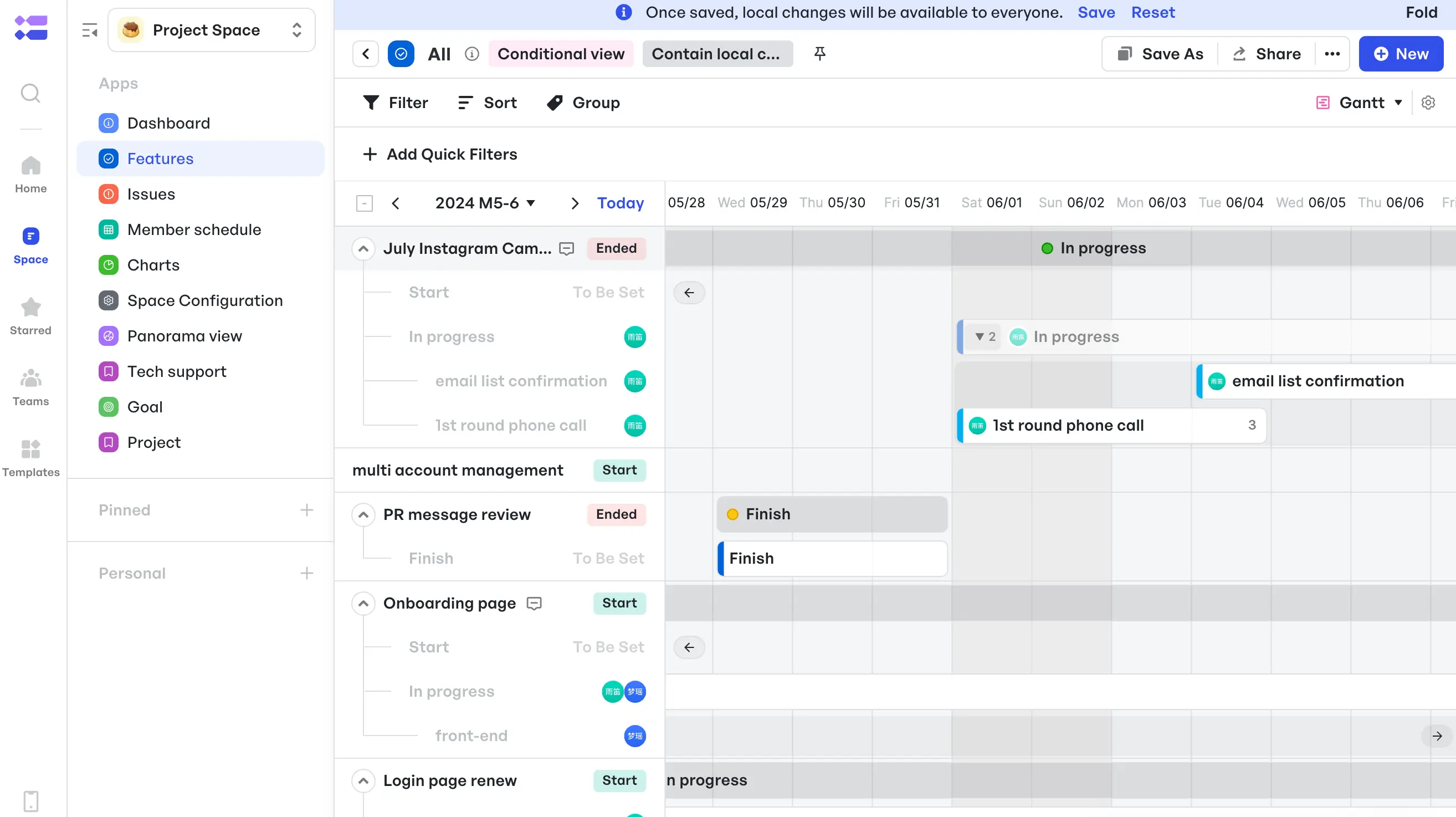 Gantt View in Meegle
Gantt View in MeeglePrioritizing critical tasks to maintain project momentum
Focusing on activities along the critical path ensures that key dependencies are addressed without delay. Timely completion of these tasks keeps the project moving forward and reduces the likelihood of cascading delays across the timeline.
Proactively identifying risks before they escalate
Monitoring the critical path helps surface potential issues early. By applying mitigation strategies before issues disrupt progress, teams can reduce idle time, avoid cost overruns, and stay aligned with delivery goals.
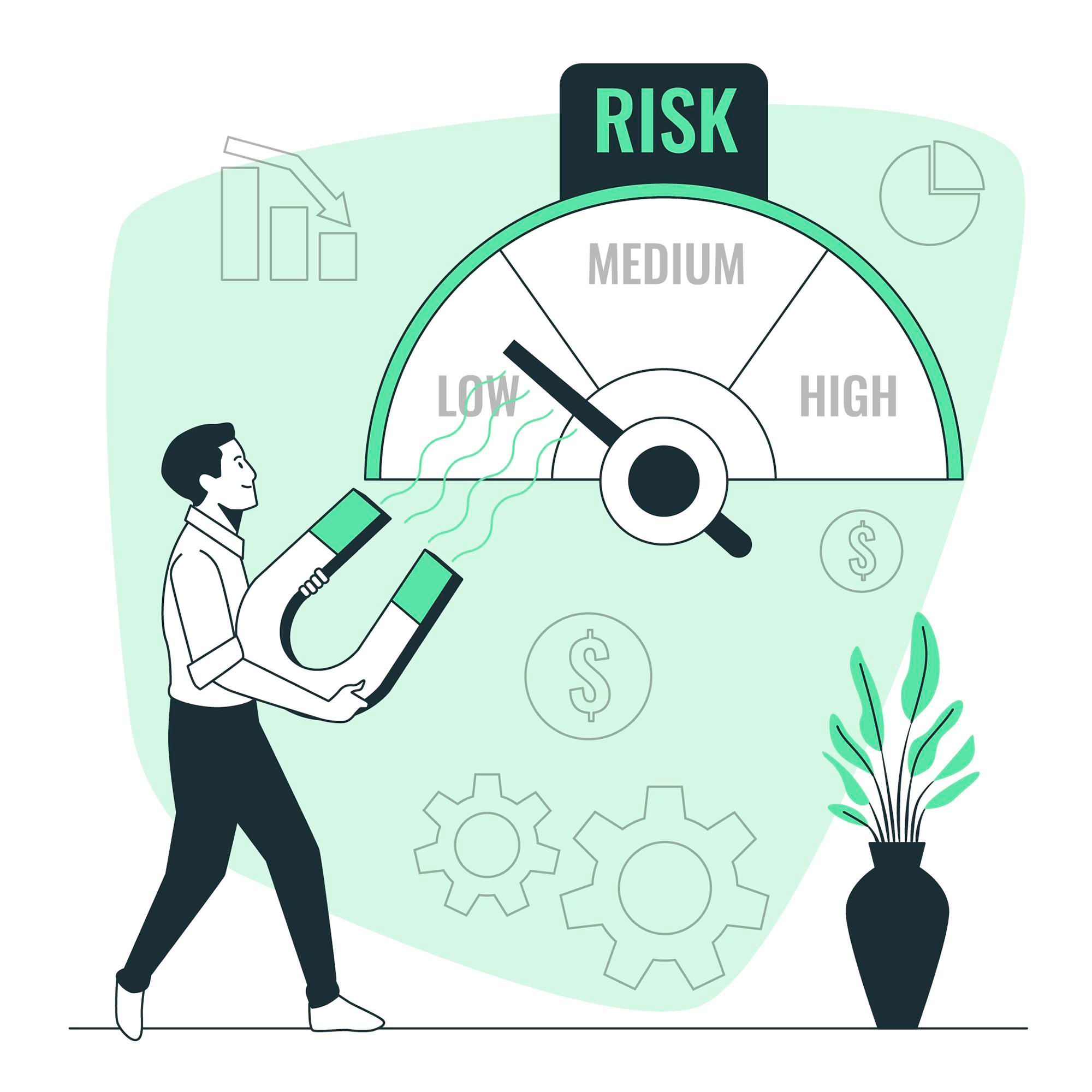 Identify risks early with CPM (Source: Freepik)
Identify risks early with CPM (Source: Freepik)Strengthening team coordination through role clarity
When team members understand how their work fits into the broader sequence of tasks, collaboration improves. Clear visibility into responsibilities and task dependencies fosters accountability and helps your teams work in sync toward shared milestones.
Allocating resources with greater precision
Differentiating between critical and non-critical tasks allows you to allocate personnel, time, and materials more strategically. Resources are focused on where delays would have the greatest impact, maximizing productivity while minimizing waste.
Using floats to adapt schedules intelligently
Float, or slack time, shows where flexibility exists without affecting the final delivery date. This insight supports more adaptable scheduling, helping managers absorb disruptions without derailing the overall timeline.
Disadvantages of CPM
There are certain limitations that project managers must consider when using the Critical Path Method (CPM). A few are outlined below:
Difficult to implement in large-scale projects
When a project includes numerous tasks and complex interdependencies, implementing CPM can become cumbersome. The sheer volume of data and the need for detailed planning may overwhelm your team without the right tools or experience.
Not suitable for dynamic or Agile environments
CPM is less effective in projects that require frequent scope changes. For instance, Agile development uses flexible frameworks like Scrum or Kanban that allow teams to respond quickly to evolving requirements—something CPM’s rigid structure cannot easily support.
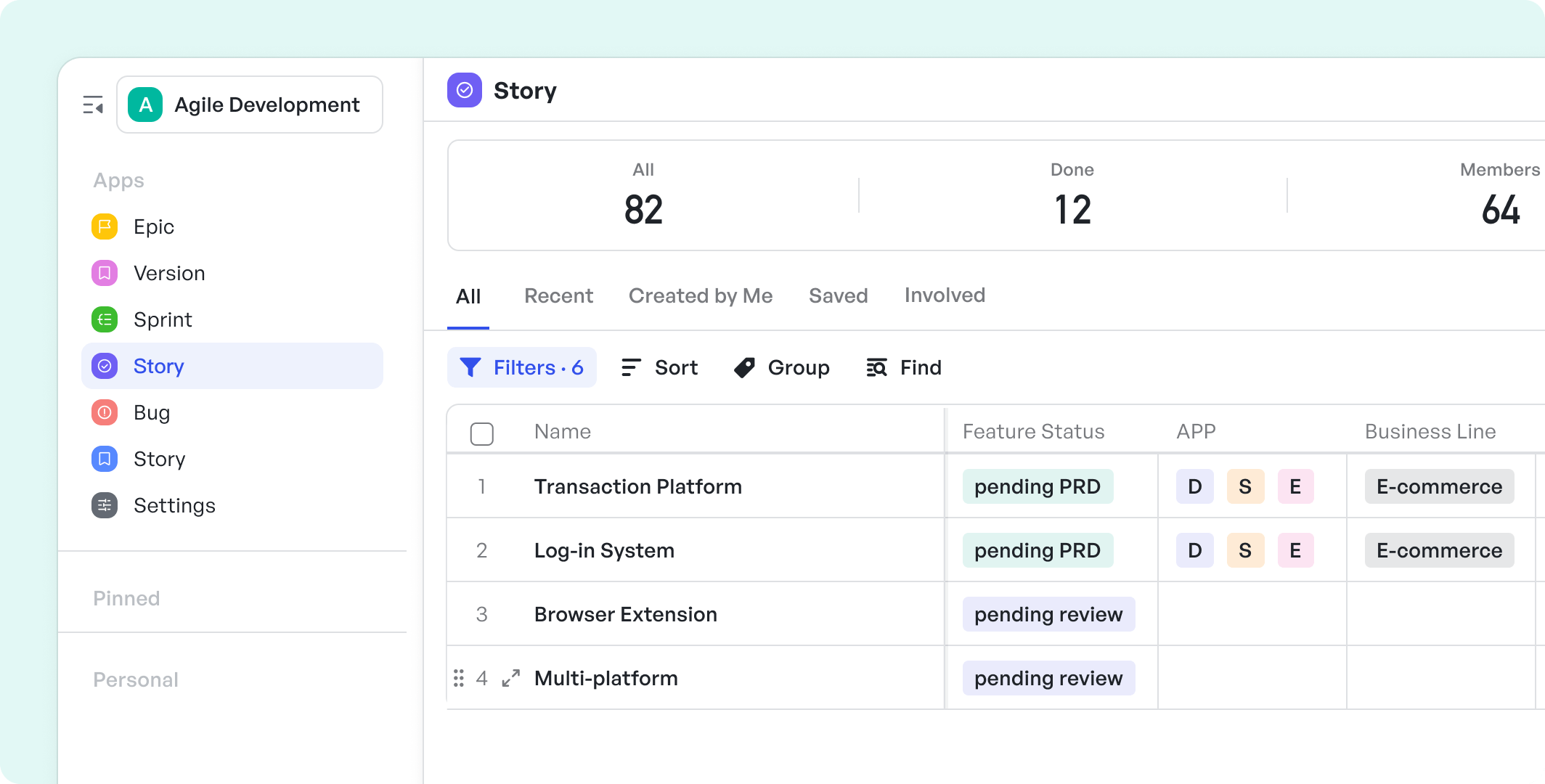 Agile development template in Meegle
Agile development template in MeegleEstimating task durations is difficult
Accurate duration estimates are critical for CPM to produce a reliable project schedule. However, estimating time for tasks with unknowns or evolving scopes is inherently challenging. Inaccurate estimates can distort the critical path, leading to delays and unrealistic expectations.
Does not account for external scheduling interruptions
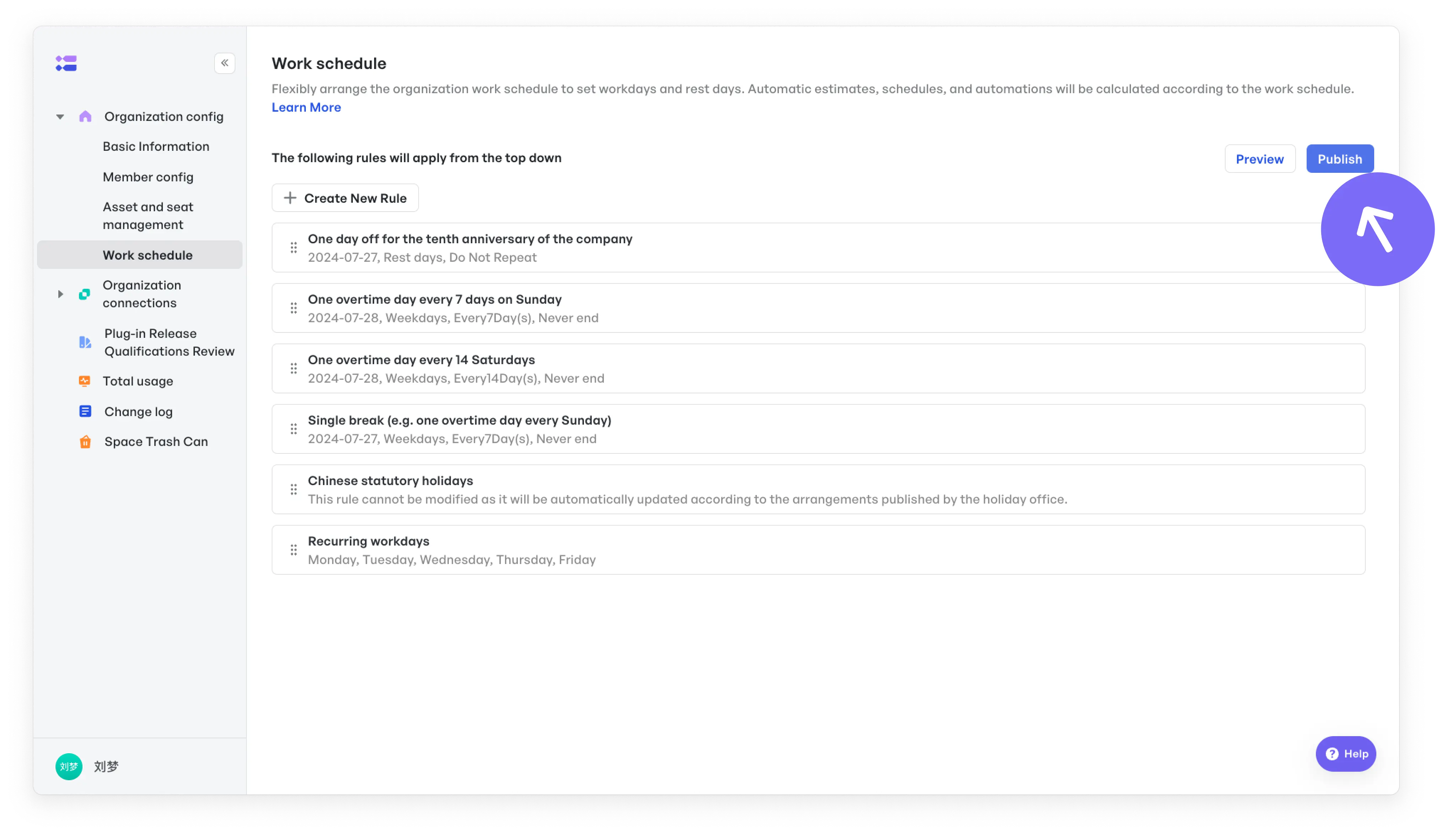 Customize and automate organization- or team-wide work calender in Meegle
Customize and automate organization- or team-wide work calender in MeegleCPM assumes uninterrupted task execution. It does not consider delays from holidays, system downtimes, or team members’ time off. This omission can impact the feasibility of the projected timeline.
Example of critical path in project management
To understand how the Critical Path Method (CPM) works in practice, let’s look at how it applies to a commercial construction project. In such projects, tasks like foundation laying, structural framing, electrical and plumbing installations must follow a fixed sequence, forming a critical path.
For example, framing can’t begin until the foundation is set, and utility work can’t start until framing is complete. Any delay in these tasks potentially moves the project timeline.
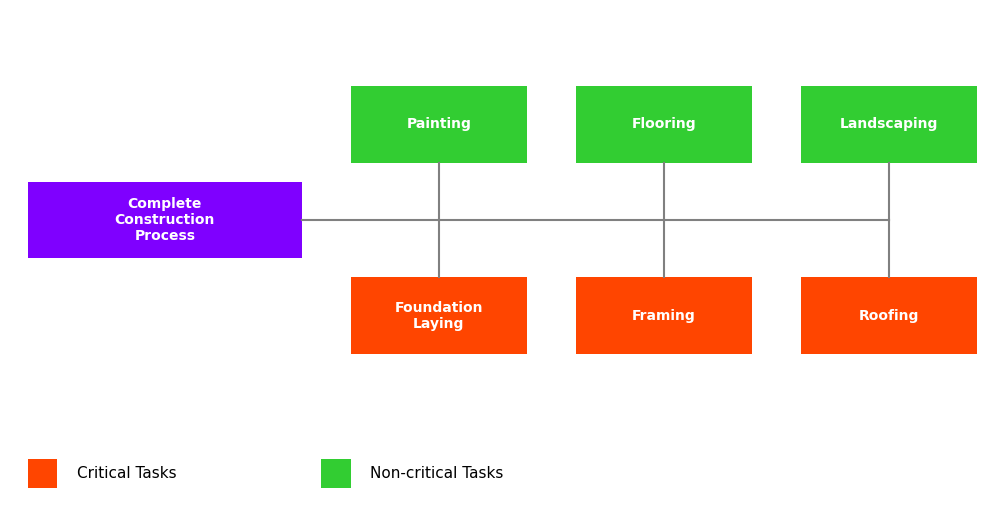 Distinguishing critical and non-critical tasks in a construction project
Distinguishing critical and non-critical tasks in a construction projectIn contrast, tasks like landscaping, painting, or installing fixtures can be scheduled more flexibly, as they don’t immediately impact structural progress. What CPM essentially does is help you clearly distinguish between time-sensitive tasks—like mechanical, electrical, plumbing (MEP) installations, and flexible ones, like installing light fixtures.
This allows them to prioritize critical activities, prevent schedule overruns, and allocate resources where delays would halt overall progress.
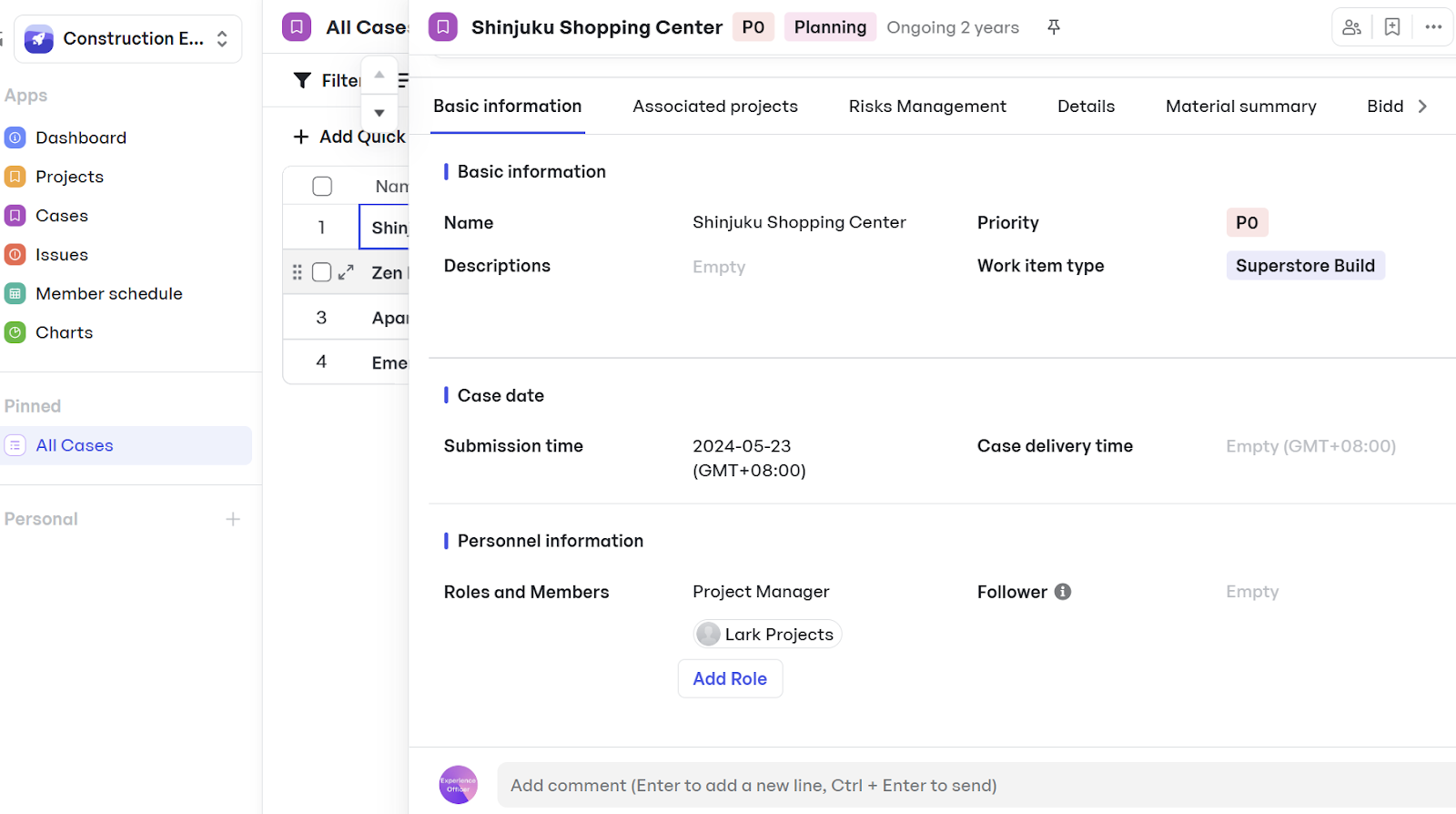 Construction project details: status, roles, and timeline in Meegle
Construction project details: status, roles, and timeline in MeegleThey can also use Meegle’s Engineering Project Management Template to visualize this flow, seeing exactly how tasks like framing or MEP installations link to the project’s due dates. It makes it easier to monitor progress, adjust schedules, and keep complex builds on track.
CPM vs. PERT vs. Gantt Charts: Key differences and applications in project management
In project management, CPM, Program evaluation and review technique (PERT), and Gantt Charts are all essential tools and techniques used to plan, track, and manage projects. However, each serves different purposes and has unique strengths.
To determine which is best suited to your project’s needs, it is necessary to understand the key differences between them. Below is a breakdown of all three to help you make a proper decision.
| Category | CPM | PERT | Gantt Charts |
|---|---|---|---|
| Focus | Identifies tasks that directly affect project completion | Estimates project duration using optimistic, pessimistic, and most likely timeframes | Visualizes task schedules and durations, best for linear progress |
| Strengths | Suitable for projects with well-defined tasks and fixed durations | Useful when task durations are uncertain or variable | Great for tracking progress and coordinating teams |
| Weaknesses | Assumes task durations are fixed, limiting flexibility | Requires detailed data and can be complex to manage | Doesn’t show task dependencies or critical paths |
| Best For | Projects with clear timelines and predictable steps | Projects with uncertainty in task durations | Straightforward projects with sequential tasks |
| Example | Construction: Prioritizing tasks like sourcing materials and quality control to meet deadlines | R&D: Estimating time to develop a new product with variable phases | Event Planning: Scheduling tasks like booking venues and arranging catering |
While Gantt Charts help visualize project timelines, techniques like PERT and CPM offer deeper scheduling insights. In particular, determining the critical path requires the structured methodology that CPM provides.
Finding the critical path in project management: steps and techniques
Finding the critical path involves identifying the longest sequence of dependent tasks from the start to the end of a project. This process considers task durations and dependencies to determine the path that directly impacts the project’s completion.
Suggested read:👉What Are Project Phases? How Many Do We Have?
Below is a breakdown of the steps, along with an example to illustrate the process.
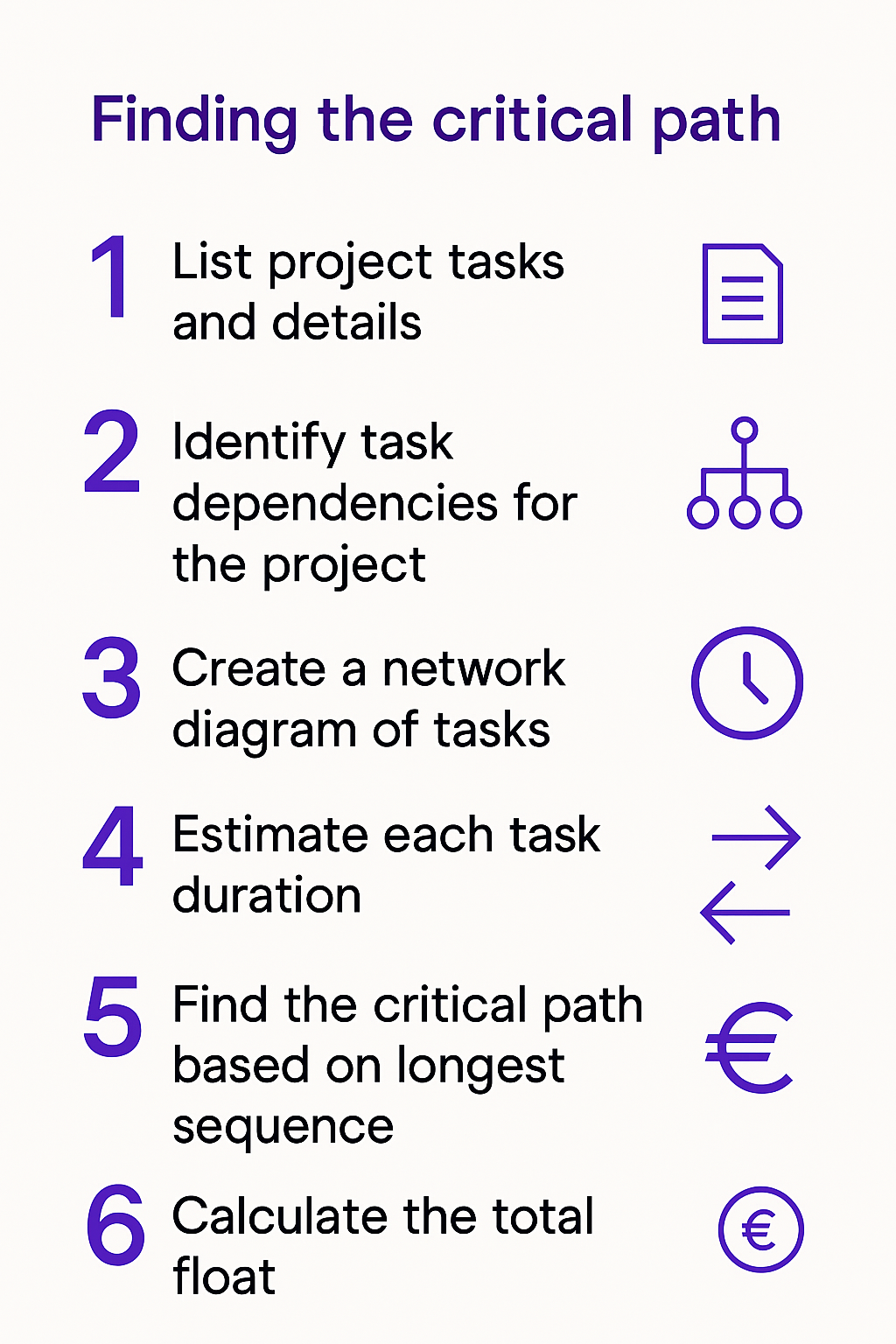 Steps involved in finding the critical path
Steps involved in finding the critical pathStep 1: Identify all the tasks that are required to complete the project
The first step in calculating the critical path is listing every task involved in your project from start to finish. For example, in a software development project, this includes distinct phases such as gathering requirements, designing the system, writing code, testing, fixing bugs, and deploying the final product.
Here’s a list of tasks for a typical software development cycle along with unique task IDs and time required for each in days:
| Task ID | Task | Duration (Days) |
|---|---|---|
| A | Requirements gathering | 5 |
| B | Design phase | 7 |
| C | Coding phase | 14 |
| D | Unit testing | 5 |
| E | Integration testing | 7 |
| F | User acceptance testing (UAT) | 5 |
| G | Bug fixes and revisions | 4 |
| H | Deployment to production | 3 |
| I | Final product | 0 (milestone) |
These tasks represent the complete lifecycle of a software development project, with durations assigned to each based on historical data or team estimates. This list serves as the foundation for analyzing timelines and tracking progress.
Step 2: Determine the dependencies (sequence) of tasks
In every project, tasks can be categorized into two types:
- Dependent tasks: These rely on the completion of other tasks before they can begin. For example, the coding phase cannot begin until the design phase is completed.
- Concurrent tasks: These can be performed simultaneously and are independent of each other. For instance, one team may code while another team conducts testing.
To build a complete timeline, it’s essential to identify task dependencies. This ensures that the sequence of work supports efficient execution.
2 simple steps to identify an immediate predecessor:
- Identify the tasks that must be completed before a particular task can start
- Determine which tasks can run concurrently
For example, the design phase cannot begin until requirements gathering is complete. Similarly, deployment cannot proceed until bug fixes and revisions are done.
Here is a list of tasks with their immediate predecessors:
| Task ID | Task | Immediate Predecessors |
|---|---|---|
| A | Requirements gathering | - |
| B | Design phase | A |
| C | Coding phase | B |
| D | Unit testing | C |
| E | Integration testing | D |
| F | User acceptance testing (UAT) | E |
| G | Bug fixes and revisions | D, F |
| H | Deployment to production | G |
| I | Final product | H |
This sequence of tasks, also known as the activity sequence, is a key input for CPM. Once dependencies are outlined, you can proceed to map the critical path.
Step 3: Create a network diagram of the critical path
A network diagram visually represents project tasks and their dependencies. To create one:
- List task sequences: Use the information from the previous step.
- Create nodes: Represent each task with a node (e.g., circles).
- Draw arrows: Connect nodes with arrows to show dependencies. The arrow direction indicates task order.
The table in step 2 is converted into a network diagram as shown below:
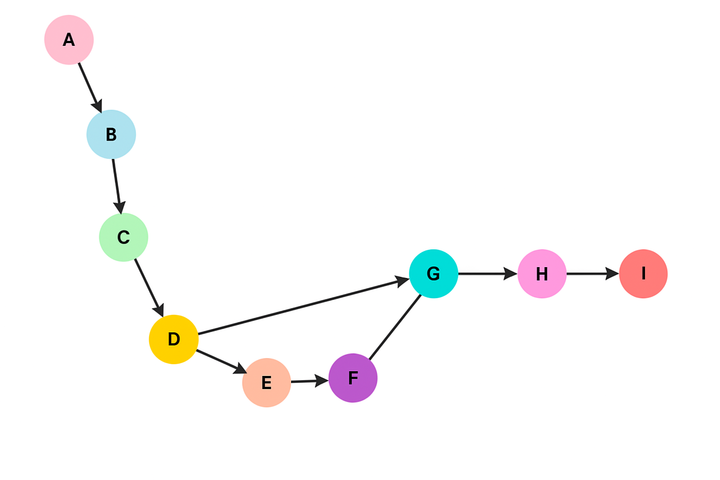 Visual representation of task dependencies and their sequence in the project
Visual representation of task dependencies and their sequence in the projectThis diagram shows how tasks relate to one another and helps identify the longest path in the project schedule.
Step 4: Estimate the duration of each task
The Critical Path Method often uses a technique called three-point estimation to account for variability in task duration. It includes:
- Best-case scenario: Shortest possible duration.
- Normal scenario: Most likely duration.
- Worst-case scenario: Longest expected duration due to delays or issues.
The average of these three cases would help project managers to predict a realistic task duration for scheduling.
For ease of reference, let us designate the best-case scenario as A, the normal scenario as B, and the worst-case scenario as C.
The average activity duration and the weighted average activity duration can be calculated as the following:
 Formulae to calculate average and weighted average duration
Formulae to calculate average and weighted average durationWe generally rely on the normal scenario, where you take the actual duration as it is. This approach gives us a clear understanding of how long each task will take, assuming there are no delays.
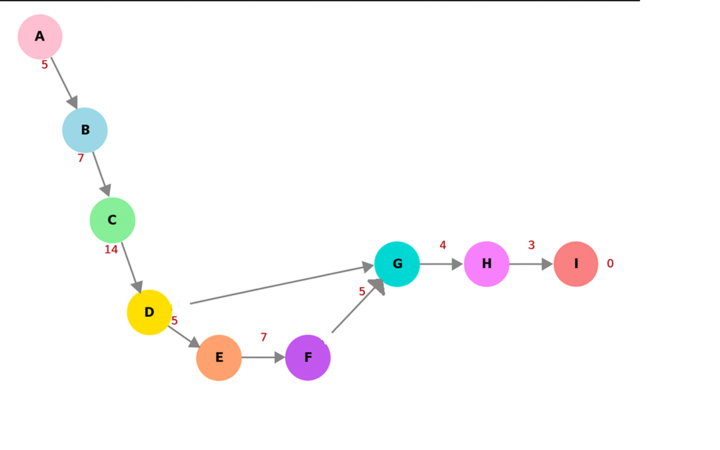 Task’s duration is listed next to the task ID in the network diagram
Task’s duration is listed next to the task ID in the network diagramWays to estimate durations:
- Based on experience: Useful for familiar tasks.
- Industry benchmarks: Provide reference values for common tasks.
- Extrapolated data: Estimate based on similar past tasks.
While these methods help, it’s important to stay flexible—tasks may still take more or less time than expected.
You might be interested in checking out these formulas for calculating critical path.
Step 5:Calculate the critical path based on the longest sequence value you obtain
Once durations and dependencies are set, calculate the critical path:
- Start with the first activity: Start time = 0. End time = start time + duration.
- For each following activity: Start time = end time of the predecessor. End time = start time + duration.
- Continue this through the project: You’ll then identify the total time required for project completion.
By continuing this process for each task, you can calculate the total time it takes to complete the project. In our network diagram, the start time appears on the left side of each node, while the end time is marked on the right side.
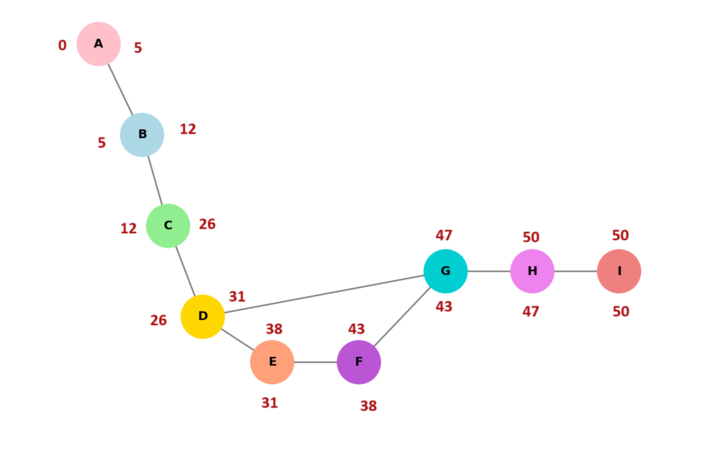 Network diagram with start and end times
Network diagram with start and end timesThis process strengthens team alignment and sets clear expectations for future projects.
Step 6: Calculate the float value (optional)
Float (or slack) is the amount of time a task can be delayed without affecting the overall project timeline. Activities on the critical path have zero float.
To calculate floats for non-critical tasks:
- Identify the second longest activity sequence.
- Compare durations: Subtract the duration of the second path from the critical path.
- Analyze shared tasks: Tasks common in both sequences will still have zero float.
Understanding float helps you pinpoint where flexibility exists and where delays can occur without derailing the schedule.
Best practices in using the Critical Path Method (CPM)
To apply the Critical Path Method effectively and keep your project on track, consider the following best practices that support accurate planning, real-time visibility, and informed decision-making throughout the project lifecycle.
- Define all project activities clearly: Break the project into discrete, manageable tasks with clear start and end points. Ambiguity in task scope can lead to inaccurate duration estimates and missed dependencies.
- Establish accurate task durations: Use historical data, expert judgment, or estimation techniques to determine realistic durations. Over- or underestimating task time can skew the critical path and affect planning accuracy.
- Identify logical dependencies between tasks: Determine which tasks must precede or follow others. Properly sequencing tasks is essential for CPM to work effectively and identify true project constraints.
- Visualize the network diagram: Build a network diagram that maps out task dependencies. Tools like Meegle or other project management software can help visualize the task flow and surface the critical path automatically.
- Continuously monitor the critical path: As the project progresses, revisit the critical path regularly. Changes in task duration, scope, or resource availability may shift the critical path and require realignment.
- Use float/slack to optimize scheduling: Identify which tasks have float (slack time) and which do not. This allows flexibility in scheduling non-critical tasks without affecting the overall project duration.
- Allocate resources based on path priority: Focus resources on tasks along the critical path first, as delays here directly impact the project deadline. Balance remaining resources across non-critical tasks to maintain efficiency.
- Update plans in real time: If tasks are delayed or completed ahead of schedule, update the schedule and recalculate the critical path. Real-time adjustments help prevent cascading delays.
- Document assumptions and constraints: Record any assumptions made during planning (e.g., resource availability, weather conditions). This helps contextualize changes when re-evaluating the path later.
- Communicate clearly with stakeholders: Share updates on critical path changes and implications with stakeholders and team members. Visibility improves collaboration and decision-making, especially when trade-offs are required.
Challenges in applying the Critical Path Method (CPM)
While CPM is a powerful planning tool, it comes with its own set of challenges that teams should be aware of and prepared to address.
- Inaccurate task estimation: Estimating task durations without sufficient data or expertise can lead to unrealistic schedules, which in turn distorts the critical path.
- Overlooking task dependencies: Missing or misidentifying dependencies between tasks can result in incorrect sequencing and an unreliable network diagram.
- Changing project scope: Scope creep or shifting priorities can affect task duration, introduce new dependencies, and shift the critical path mid-project.
- Limited flexibility for uncertainty: CPM is deterministic. It assumes fixed task durations. Projects with high uncertainty or variability may require more adaptive approaches.
- Neglecting resource constraints: CPM focuses on task timing, not resource availability. Without integrating resource planning, a feasible critical path may still be impossible to execute.
- Difficulty in maintaining real-time updates: If schedules aren’t updated regularly, the critical path may become outdated, reducing its usefulness for decision-making.
- Complexity in large projects: For large-scale projects with hundreds of interdependent tasks, managing the CPM network can become complex without the right tools or automation.
- Communication breakdowns: Lack of clarity around critical tasks or changes in the critical path can lead to delays, especially when cross-functional teams are involved.
Implementing CPM for your project with Meegle
In Meegle, project workflows are constructed using nodes that represent individual tasks or stages. These nodes are linked to indicate dependencies—i.e on which tasks must be completed before others can begin. This mirrors how the Critical Path Method (CPM) defines activity sequences and dependencies.
Unlike traditional project management tools that often rely on static charts and rigid timelines, Meegle’s node-based system offers a more dynamic and adaptable way to model and manage critical paths.
CPM in Meegle vs. traditional project management tools
| Feature | Traditional Tools | Meegle |
|---|---|---|
| Schedule management | Static schedules and rigid timelines | Real-time updates with adjustable workflows |
| Flexibility | Limited adaptability to change | Dynamic task adjustment based on dependencies |
| Dependency handling | Manual or limited recalculation | Auto-updated task sequences and critical path visibility |
| Visual tools | Basic Gantt charts | Gantt charts, member schedules, and delay labels |
| Task breakdown | Often flat task lists | Node-based tasks with subtasks, owners, and schedules |
| Template support | Minimal or generic templates | Predesigned and customizable workflow templates |
| Critical path support | Requires manual mapping | Critical paths become visible as workflow is built |
As tasks are added and connected, Meegle's interface automatically arranges them into a logical sequence. The longest chain of dependent tasks—the critical path—emerges directly from the layout. This visual workflow serves the same function as a critical path diagram, enabling you to identify high-impact tasks and monitor how they influence overall project duration.
Adding tasks under nodes in Meegle
Nodes are configured to hold key task-level information. You can specify:
- Start and end times, which feed into the overall project timeline
- Assigned team members, which helps clarify ownership and accountability
- Subtasks, which offer a finer breakdown of work within a single activity
These inputs contribute to the accuracy of the schedule and improve traceability within the workflow. When dependencies are established between nodes, Meegle factors those relationships into how it calculates the timeline—ensuring that successor tasks do not begin before their prerequisites are complete.
Dynamic timeline updates
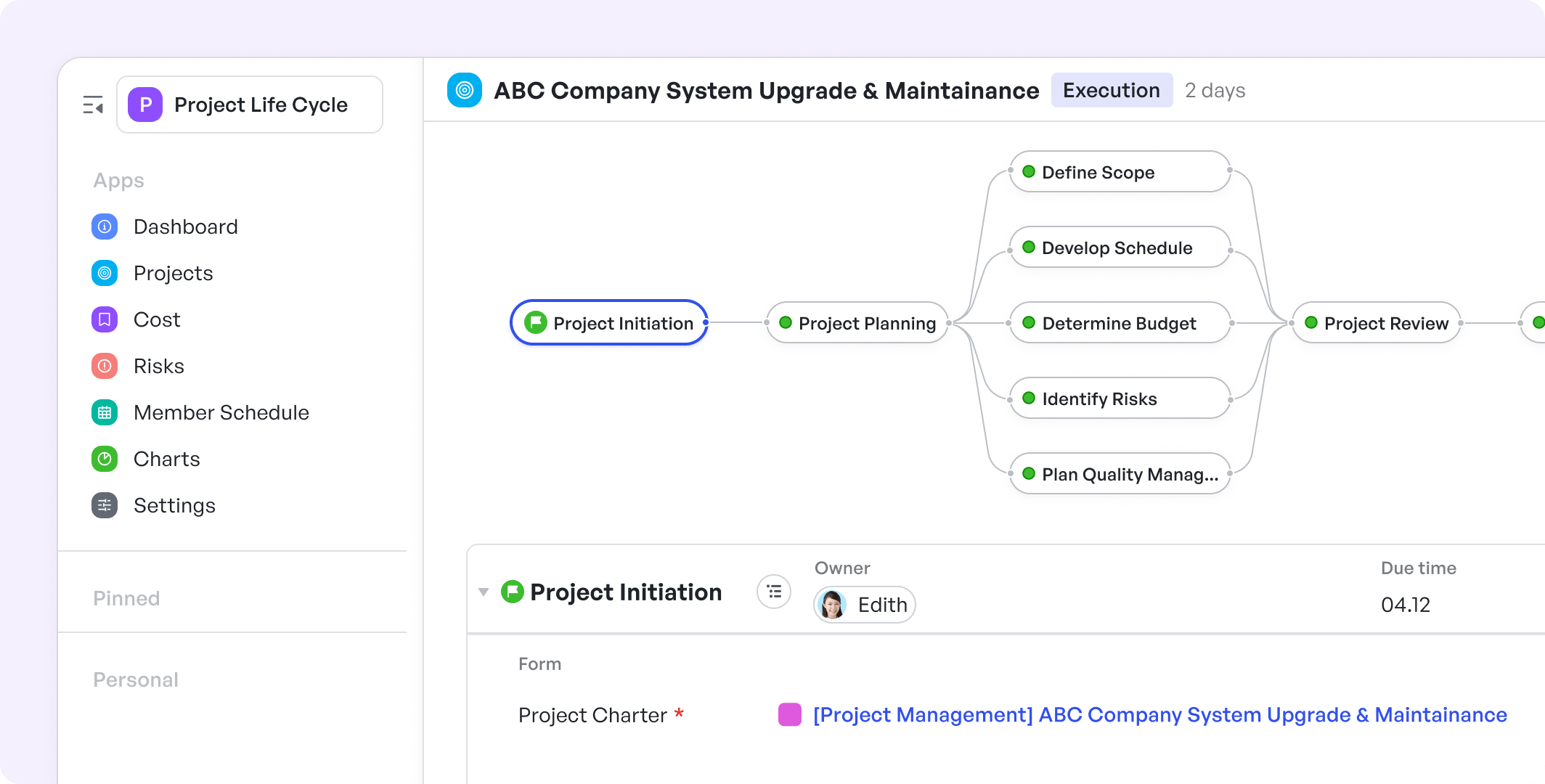 Complete project timeline in Meegle
Complete project timeline in Meegle- As tasks are added or modified, Meegle recalculates and adjusts the project timeline in real time.
- These updates help you immediately observe how changes in one part of the workflow affect downstream activities.
- The critical path—the longest sequence of dependent tasks—emerges clearly from the visual layout, without requiring manual calculation or additional tools.
Delay labeling in chart view
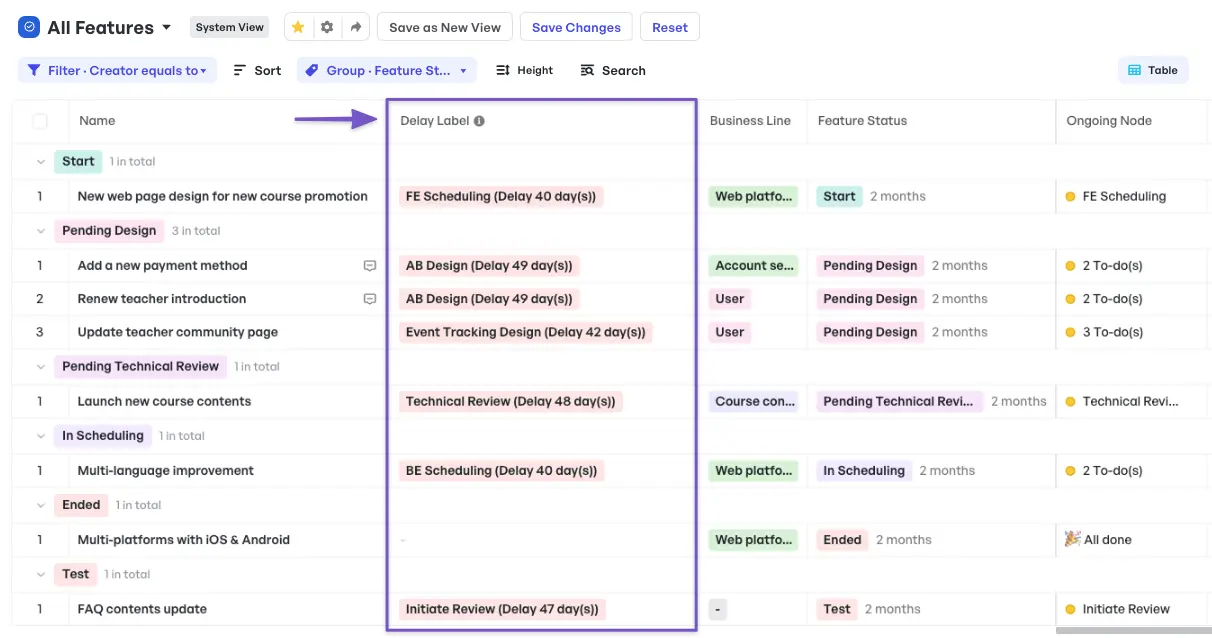 Delay label in Meegle
Delay label in Meegle- If a task falls behind schedule, Meegle adds a delay tag directly next to the affected node.
- Because each node is linked to its dependent tasks, delays automatically ripple through the workflow.
- This visual feedback shows how slippages in one task affect the timing of the overall project.
Integrated team member schedules
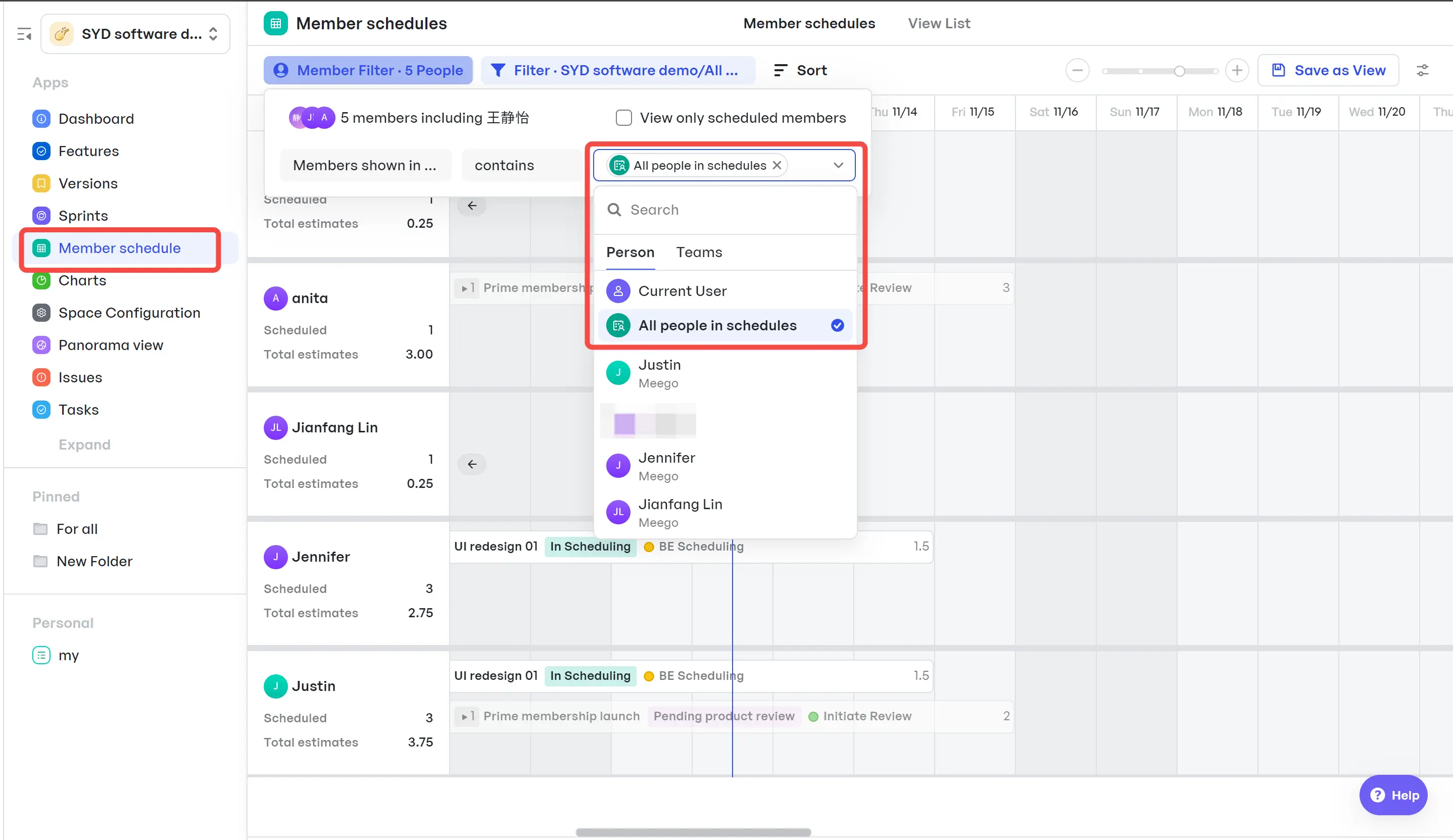 Team member schedule in Meegle
Team member schedule in Meegle- Meegle incorporates individual work schedules into the workflow.
- It maps each team member’s availability against assigned tasks, supporting better workload planning.
- If a critical-path task is assigned to someone with limited availability, this potential bottleneck becomes visible early.
- Project managers can then adjust assignments or timelines to avoid scheduling conflicts and keep progress on track.
Reusable workflow templates
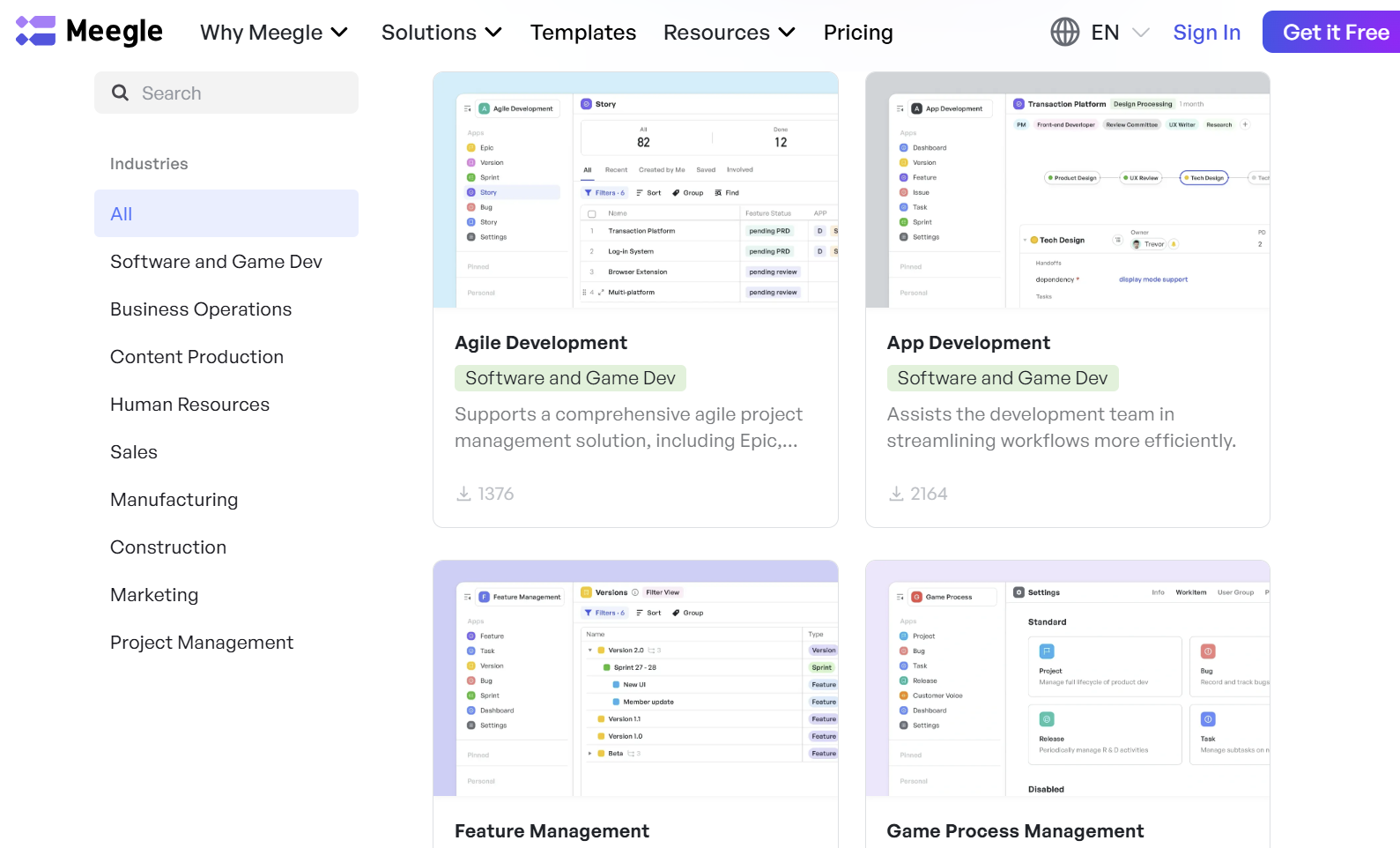 Pre-designed, customizable Meegle template for various industries
Pre-designed, customizable Meegle template for various industries- Meegle provides ready-made templates that include standard dependency relationships and milestone configurations.
- These templates serve as a practical baseline for new projects, reducing the time needed to set up workflows.
- Teams can customize the templates as needed while still maintaining alignment with CPM structure and logic.
You can seamlessly adapt to changes and ensure that your team can make decisions quickly and keep the project moving forward despite delays.
Support critical path project management with Meegle’s tools for mapping, timing, and task control.
FAQs
1. What is the difference between WBS and the critical path?
The Work Breakdown Structure (WBS) breaks a project into smaller, manageable components and provides a hierarchical view of the project scope. The critical path, on the other hand, identifies the longest sequence of dependent tasks that must be completed on time to meet the overall project deadline.
2. What tools can help implement the Critical Path Method (CPM)?
Meegle is a perfect tool for implementing the Critical Path Method (CPM) in project management. Its node-based workflows help project managers visualize task dependencies, track progress, and prioritize critical tasks. Additionally, the visual workflows provide a clear view of responsibilities and deadlines.
3. What is the difference between the critical path and the longest path?
In project management, the critical path is the longest sequence of dependent tasks in the network diagram. A delay in any of these tasks will directly affect the overall project timeline. Identifying the critical path helps determine the shortest possible duration for completing the project.
4. Can a project have multiple critical paths?
Yes, a project can have more than one critical path. This occurs when multiple sequences of activities share the same longest duration. In such cases, all of these sequences are considered critical paths, and delays in any of them will impact the overall project timeline.
5. Is CPM an activity-oriented technique?
Yes, the Critical Path Method (CPM) is an activity-oriented technique. It focuses on identifying the sequence of tasks that determines the shortest possible time to complete a project. CPM is deterministic, meaning it is based on fixed activity durations and clearly defined dependencies between tasks.
The world’s #1 visualized project management tool
Powered by the next gen visual workflow engineRead More
Check All BlogsStart creating impactful work today



